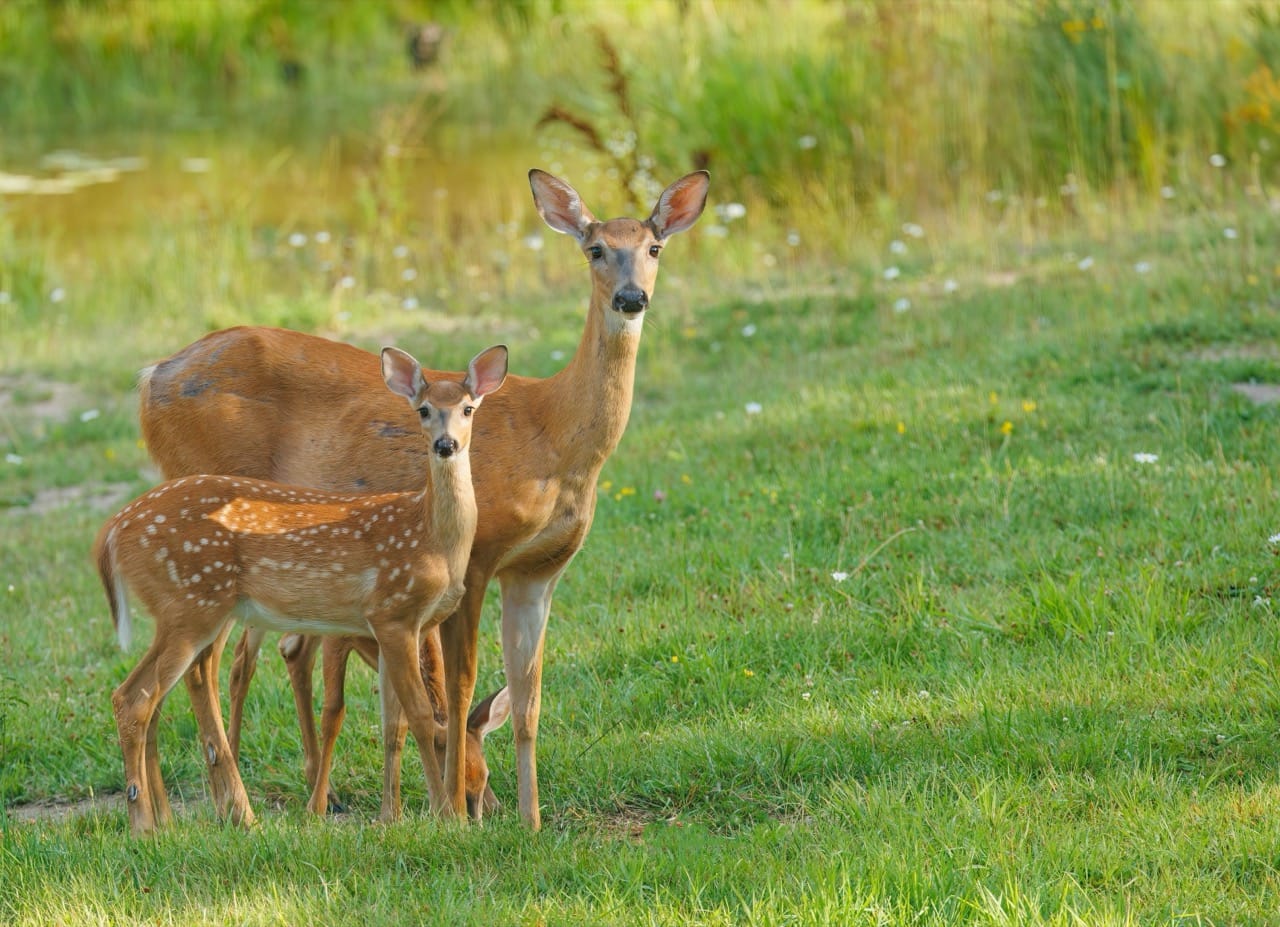The white-tailed deer, scientifically known as Odocoileus virginianus, epitomizes the beauty and adaptability of North America’s wildlife. These deer are not only a vital part of the ecosystem but also hold significant cultural and economic importance across their range. Their ability to thrive in diverse habitats from the Canadian forests to the Mexican plains speaks volumes about their evolutionary prowess. This article delves into the intricate life of these elegant creatures, exploring their physical characteristics, behavior, and interactions with their environment.
Characteristics / Physical Description
The white-tailed deer is immediately recognizable by its distinctive tail, which it raises like a flag when alarmed, exposing its white underside as a warning signal to other deer. Adult males, known as bucks, typically weigh between 150 to 300 pounds, while females, or does, are slightly smaller. Bucks also grow antlers annually, which are shed after the mating season. These antlers, which can be quite elaborate, are used in battles for territory and mates.
Taxonomy and Classification
Odocoileus virginianus belongs to the family Cervidae, which includes other deer species. The species is remarkably diverse genetically, which has allowed it to adapt to various environments, leading to over 16 subspecies in North America alone. Each subspecies is adapted to its unique habitat, showcasing the species’ incredible genetic flexibility.
Behavior and Social Structure
White-tailed deer are primarily crepuscular, being most active during dawn and dusk. Outside of the breeding season, known as the rut, bucks tend to form bachelor groups, while does and their fawns group together in matrilineal herds. Social structure during the rut changes dramatically as bucks become more solitary or aggressive in competing for mates.
Habitat and Distribution
From the dense forests of Canada to the swamplands of Florida, the white-tailed deer has a vast range that showcases its adaptability. Their primary habitats include mixed woodlands, agricultural fields, and meadows, which provide both cover and diverse food sources. Their population is densest in the eastern part of North America due to ideal habitat conditions.
Diet and Feeding Habits
As herbivores, white-tailed deer have a varied diet that changes with the seasons. They primarily feed on leaves, twigs, fruits, and nuts, but will also opportunistically consume garden vegetables and flowers. This adaptability in diet helps them to survive in diverse environments and conditions.
Breeding and Reproduction
The breeding season for white-tailed deer peaks in late fall, and this period is characterized by dramatic chases and battles among bucks. After a gestation period of about 200 days, does give birth to one to three fawns in the spring. Fawns are born with white spots that help camouflage them in the underbrush.
Relationship with Humans
White-tailed deer have significant roles in terms of ecology, economy, and recreation. They are key prey species for large predators and play a role in shaping vegetation communities. Economically, they are vital for both hunting industries and wildlife watching sectors. However, they are also known for their role in vehicular accidents and as agricultural pests, leading to mixed feelings among humans.
Evolutionary History
Fossil records indicate that the ancestors of modern deer appeared in Asia during the Miocene and gradually spread across America. The evolutionary journey of the white-tailed deer is a testament to their resilience and adaptability, allowing them to survive Ice Ages and massive ecological changes.
Use as Research Animals
White-tailed deer are also important subjects for scientific research, providing valuable insights into zoonotic diseases, wildlife management, and conservation biology. Studies on their behavior, genetics, and interactions with ecosystems help in understanding broader ecological processes.
The white-tailed deer continues to captivate and challenge humans, balancing on the brink between nuisance and necessity. Its presence is a reminder of the wilderness that once covered much of North America and of the delicate balance required to maintain biodiversity today.

